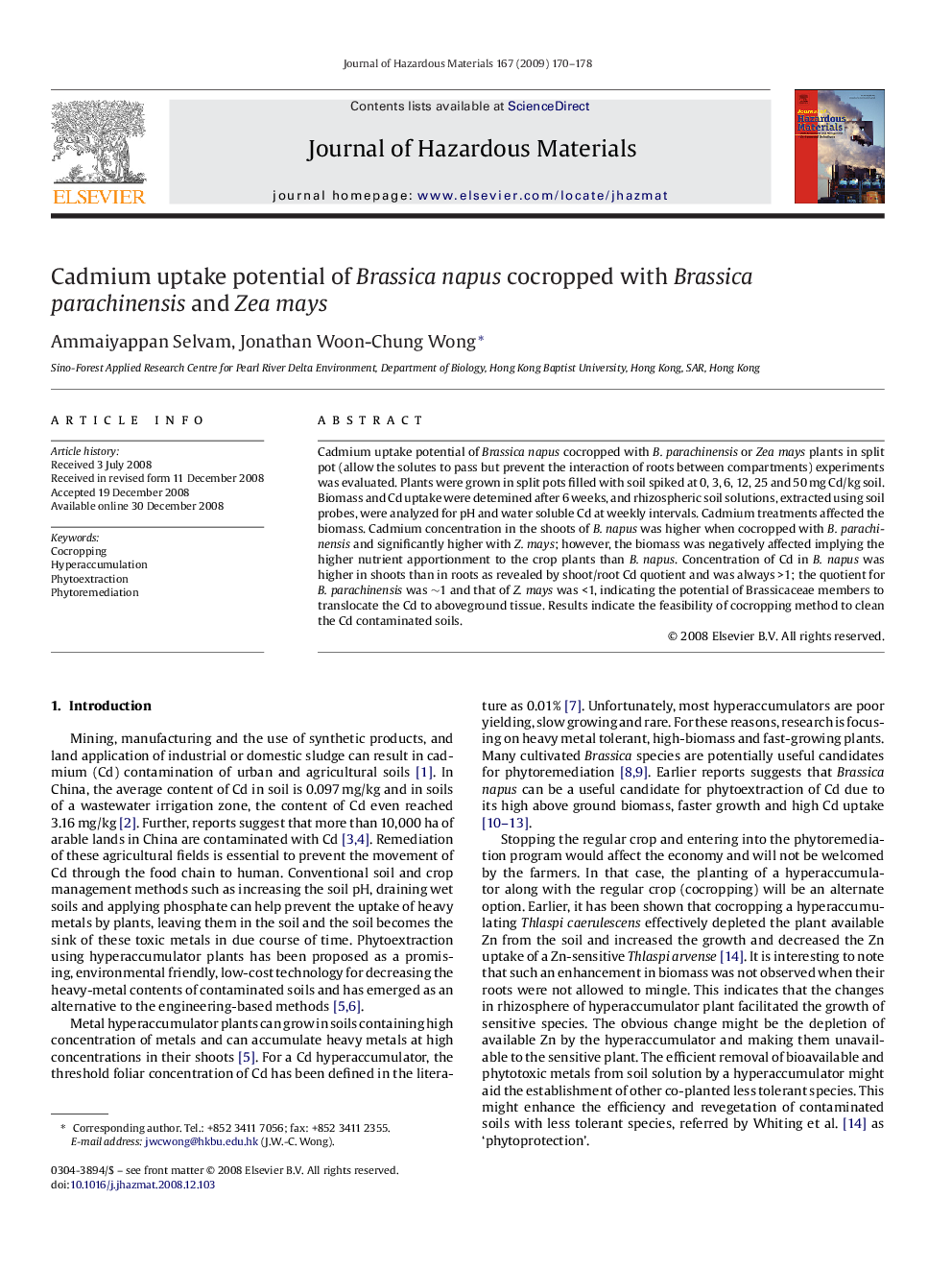| Article ID | Journal | Published Year | Pages | File Type |
|---|---|---|---|---|
| 581763 | Journal of Hazardous Materials | 2009 | 9 Pages |
Abstract
Cadmium uptake potential of Brassica napus cocropped with B. parachinensis or Zea mays plants in split pot (allow the solutes to pass but prevent the interaction of roots between compartments) experiments was evaluated. Plants were grown in split pots filled with soil spiked at 0, 3, 6, 12, 25 and 50Â mg Cd/kg soil. Biomass and Cd uptake were detemined after 6 weeks, and rhizospheric soil solutions, extracted using soil probes, were analyzed for pH and water soluble Cd at weekly intervals. Cadmium treatments affected the biomass. Cadmium concentration in the shoots of B. napus was higher when cocropped with B. parachinensis and significantly higher with Z. mays; however, the biomass was negatively affected implying the higher nutrient apportionment to the crop plants than B. napus. Concentration of Cd in B. napus was higher in shoots than in roots as revealed by shoot/root Cd quotient and was always >1; the quotient for B. parachinensis was â¼1 and that of Z. mays was <1, indicating the potential of Brassicaceae members to translocate the Cd to aboveground tissue. Results indicate the feasibility of cocropping method to clean the Cd contaminated soils.
Related Topics
Physical Sciences and Engineering
Chemical Engineering
Chemical Health and Safety
Authors
Ammaiyappan Selvam, Jonathan Woon-Chung Wong,
